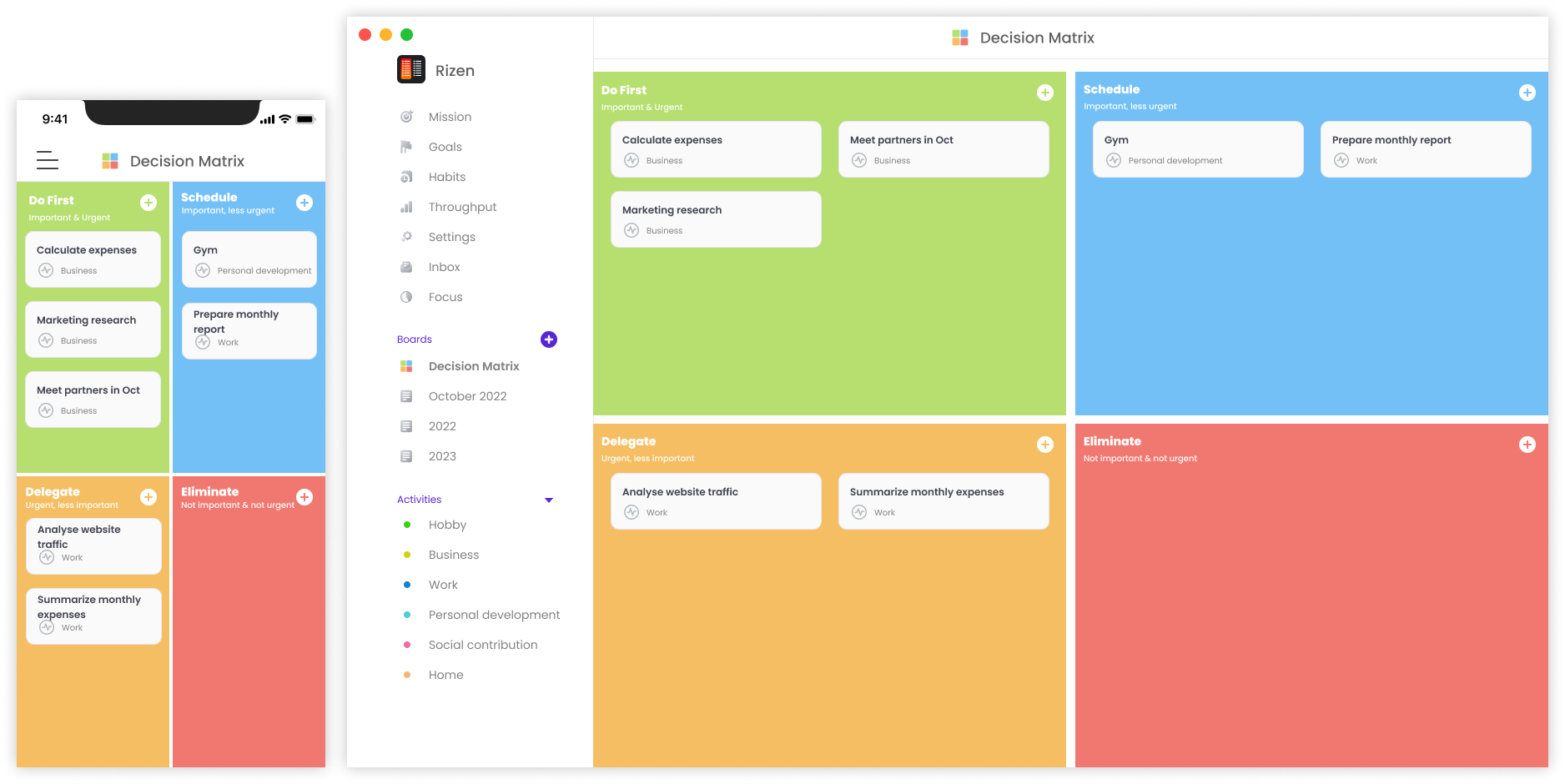Introduction
The Eisenhower Matrix, also known as the Urgent/Important Matrix, is a decision-making tool designed to help maximize personal and professional productivity. It gets its name from President Dwight Eisenhower, who famously said that “What is important is rarely urgent and what is urgent is rarely important.” The matrix can help you prioritize tasks and determine how best to spend your time.
Benefits of using the Eisenhower Matrix include improved focus, less procrastination, better organization, and a clearer understanding of the importance of different tasks. It can also be used to create structure and strategies for accomplishing goals.
How to Use the Eisenhower Matrix
To use the Eisenhower Matrix, follow these steps:
Step 1: Categorize Tasks
The first step is to categorize tasks according to their importance and urgency. Important tasks are those which contribute directly to meeting goals. Urgent tasks are those which require immediate attention. The matrix divides tasks into four categories:
- Important and Urgent ( Quadrant 1): These tasks require immediate attention and should be dealt with as soon as possible.
- Important but Not Urgent (Quadrant 2): These tasks are important but not as time-sensitive. They should be scheduled and worked on in order of decreasing importance.
- Not Important but Urgent (Quadrant 3): These tasks are time-sensitive but not important to the larger goal. Delegate or outsource these tasks if possible.
- Not Important and Not Urgent (Quadrant 4): These tasks are neither important nor urgent and should either be eliminated or delayed.
Step 2: Prioritize Tasks
Once tasks have been categorized, prioritize them according to their importance and urgency. As a rule, begin with tasks from quadrant 1, followed by tasks from quadrant 2, and so on.
Examples of Using the Eisenhower Matrix
The Eisenhower Matrix can be used for a variety of tasks, both in your personal and professional life.
Personal Life
In your personal life, the matrix can be used to organize tasks such as household chores, errands, and project planning. For instance, when planning a home renovation project, important and urgent tasks such as obtaining building permits would fall under quadrant 1, while ordering paint and home decor can be relegated to quadrant 2.
Professional Life
In the professional context, the matrix can be used to manage daily tasks, prioritize projects, and enhance team collaboration. For instance, in a team setting, important but not urgent tasks such as brainstorming and planning can fall under quadrant 2, while non-essential tasks such as replying to emails can be relegated to quadrant 4.
Challenges and Tips for Boosting Productivity with the Eisenhower Matrix
Using the Eisenhower Matrix is not a panacea for all productivity woes; there are some challenges to consider. It can be difficult to identify what tasks are important and what tasks are urgent. Additionally, you may find yourself tempted to procrastinate or dwell on tasks that are important but not urgent.
To get the most out of the Eisenhower Matrix, here are some tips:
- Avoid multitasking as much as possible. Focus on completing one task before moving on to the next.
- Set specific deadlines and break tasks into smaller achievable goals.
- Take regular breaks to clear your head and refocus on the task at hand.
- Give yourself rewards when you accomplish a task.
Summary
The Eisenhower Matrix is an invaluable tool for boosting productivity. It can help you prioritize tasks, improve focus, and prevent procrastination. By following the two-step approach outlined above and keeping these challenges and tips in mind, you should be well on your way to getting the most out of your time.


